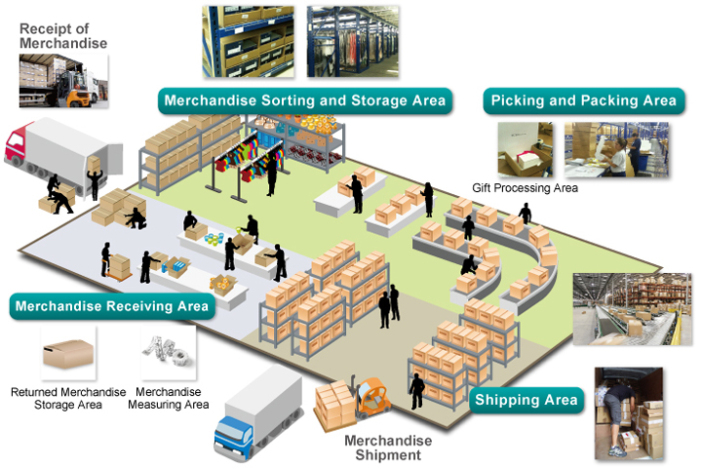
Warehouse management systems: A next-minute overview
With warehouses increasingly becoming a hub of robotic and automation innovation, we thought now would be a good time to take a closer look at this dynamic sector.
First, the basics. What is a warehouse management system?
Basically, it’s a software application which enables the digital management of a warehouse.
All the hardware – conveyors, robots, totes, which are the boxes carrying items, and other equipment – could be connected to the WMS, mostly using sensors.
This enables the user of the WMS to look at the entire warehouse in a digital form on a computer screen, or even a tablet or smartphone screen – often in realtime.
Software has been amazing computer users for decades now, so perhaps we’re used to it, but WMS applications can be quite impressive even to the most jaded.
A typical WMS can store tons of data, from weight and dimensions of individual products to how many deliveries have been made, and much more besides.
It all depends on how much data you can extract from your warehouse and the goods and equipment within.
Of course, there is a huge number of warehouse management systems out there, and there are websites which evaluate and review them.
Two of the websites which have long lists of warehouse management systems, organised in order of the number of positive reviews, are Software Advice and Capterra.
They seem to differ on which the top one is, which is probably a good thing, but we’ll just pick 10 from across both lists, based on subconscious criteria which are a mystery even to us.
Warehouse management systems
- 3PL Warehouse Manager
- Peoplevox WMS
- AFS Warehouse Management System
- Sphere WMS
- NorthStar WMS
- Foysonis WMS
- HighJump Warehouse Advantage
- Access Delta WMS
- Latitude WMS
- Aptean Warehouse Management System
Turns out, we chose the ones which mentioned “warehouse” or WMS in the title. And the list is not offered in any particular order.
While there seem to be no figures readily available to indicate overall market size, for the average user, total WMS costs are likely to be around $1,500 a month, according to ExploreWMS.com.
However, the website notes that, for a large, complex warehouse operation which perhaps requires greater functionality, such as order validation and handheld devices, it can cost as much as $50,000 per facility.
Basically, the price varies, depending on what you need. You could subscribe to a software-as-a-service offering for as little as $100 a month, or, at the other end, spend around a quarter of a million dollars for enterprise-level WMS bling.
And whatever the overall market size of the WMS software market, it’s likely to already be significant, and will undoubtedly grow, along with the global growth in e-commerce.
According to logistics experts, most warehouses are moving towards next-day and same-day delivery capabilities for consumers.
The general perception seems to be that Amazon’s initiatives in that area – of faster delivery times – are driving the market.
Amazon, of course, bought Kiva Systems a while back, and used its robots to install a very high level of automation into its warehouses.
It is these robots which have enabled the company to be able to offer next-day and same-day deliveries.
As Amazon progresses with its integration of Whole Foods Market, it’s likely that the company will accelerate its deliveries even more – perhaps to next-few-minutes deliveries, like a local fast-food takeaway restaurant or something. Using flying drones and autonomous delivery vehicles probably.
But other companies are catching up with Amazon, at least in warehouse operations, if not in the wider world of online shopping.
More and more companies are launching those small robots and integrating them into warehouse management systems, and almost all of them are wiring up those robots and other equipment to the internet of things, and using data analytics to find efficiencies in the process.
Robotics and Automation News has published an extensive list of robots for material handling previously, and is likely to look into the market further, because there seems to be a lot of reader interest in the subject.


